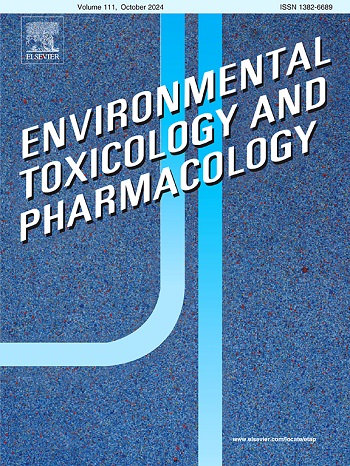Pesticide contamination and antimicrobial resistance: Two threats to the Neotropical Otter (Lontra longicaudis) in the Peñas Blancas River Basin, Costa Rica
IF 4.2
3区 环境科学与生态学
Q2 ENVIRONMENTAL SCIENCES
引用次数: 0
Abstract
The effects of synthetic pesticides on antibiotic-resistance genes (ARGs) in bacterial communities from contaminated waters are unclear. Otters in the Peñas Blancas basin encounter various anthropogenic residues, including pesticides. In 2022, we analyzed the presence of pesticides in six water samples and ARGs in eight otter fecal samples. Thirteen pesticides (herbicides, insecticides, fungicides, and multi-target) and seven ARGs (qnrS, tetA, tetB, tetQ, tetW, sulI, sulII) were detected. Regulated pesticides such as chlorpyrifos and ethoprophos, along with diazinon, diuron, imidacloprid, and terbutryn were found. These pesticides have been implicated in promoting antimicrobial resistance (AMR) in bacteria, particularly when combined with sub-lethal doses of antibiotics. Elevated levels of ethoprophos (0.67 ng/L) and a fecal sample containing four ARGs (tetA, tetB, sulI, and sulII) came from the upper basin. Our findings reveal pesticide application practices in the region, and highlight the potential risk of pesticide exposure to wildlife, including development of AMR.
农药污染和抗菌素耐药性:哥斯达黎加Peñas布兰卡斯河流域新热带水獭(Lontra longicaudis)的两大威胁
合成农药对污染水体细菌群落中抗生素抗性基因(ARGs)的影响尚不清楚。Peñas Blancas盆地的水獭会遇到各种人为残留物,包括杀虫剂。在2022年,我们分析了6个水样中的农药和8个水獭粪便样本中的ARGs。共检测到13种农药(除草剂、杀虫剂、杀菌剂和多靶点)和7种ARGs (qnrS、tetA、tetB、tetQ、tetW、sulI、sulII)。受管制的杀虫剂,如毒死蜱和乙氧丙磷,以及二嗪农、迪乌隆、吡虫啉和特布啶。这些农药与促进细菌的抗菌素耐药性(AMR)有关,特别是与亚致死剂量的抗生素联合使用时。上盆地的乙丙磷水平升高(0.67 ng/L),粪便样本中含有四种ARGs (tetA, tetB, sulI和sulII)。我们的研究结果揭示了该地区的农药使用实践,并强调了农药暴露给野生动物的潜在风险,包括抗菌素耐药性的发展。
本文章由计算机程序翻译,如有差异,请以英文原文为准。
求助全文
约1分钟内获得全文
求助全文
来源期刊
CiteScore
7.00
自引率
4.70%
发文量
185
审稿时长
34 days
期刊介绍:
Environmental Toxicology and Pharmacology publishes the results of studies concerning toxic and pharmacological effects of (human and veterinary) drugs and of environmental contaminants in animals and man.
Areas of special interest are: molecular mechanisms of toxicity, biotransformation and toxicokinetics (including toxicokinetic modelling), molecular, biochemical and physiological mechanisms explaining differences in sensitivity between species and individuals, the characterisation of pathophysiological models and mechanisms involved in the development of effects and the identification of biological markers that can be used to study exposure and effects in man and animals.
In addition to full length papers, short communications, full-length reviews and mini-reviews, Environmental Toxicology and Pharmacology will publish in depth assessments of special problem areas. The latter publications may exceed the length of a full length paper three to fourfold. A basic requirement is that the assessments are made under the auspices of international groups of leading experts in the fields concerned. The information examined may either consist of data that were already published, or of new data that were obtained within the framework of collaborative research programmes. Provision is also made for the acceptance of minireviews on (classes of) compounds, toxicities or mechanisms, debating recent advances in rapidly developing fields that fall within the scope of the journal.

 求助内容:
求助内容: 应助结果提醒方式:
应助结果提醒方式:


